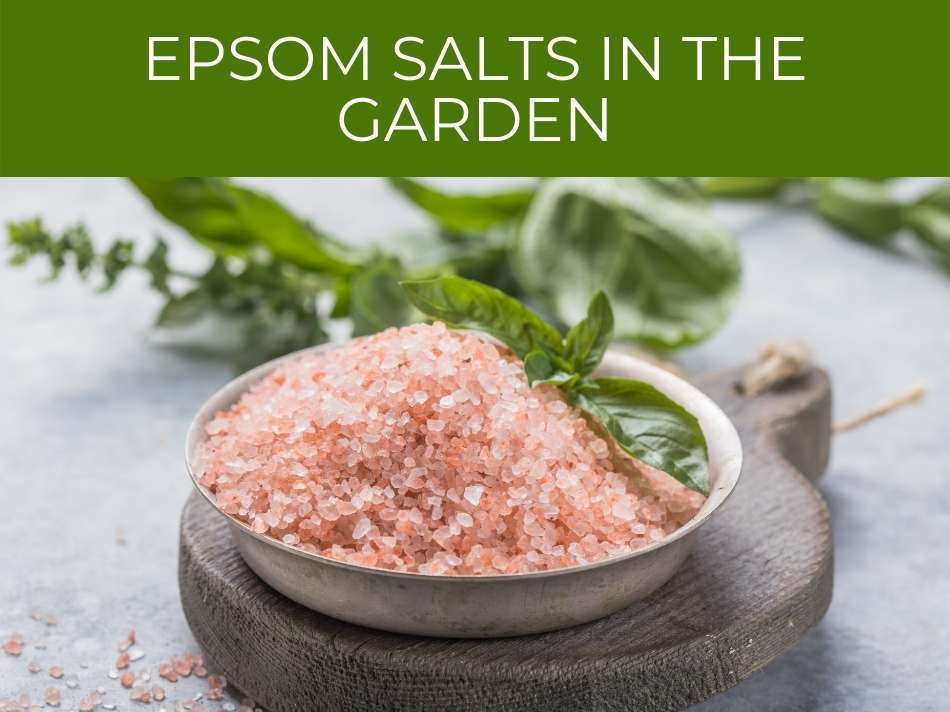‘Epsom salts will make your tomatoes grow! They’ll cure any fungus, parasite, or bug. You’ll harvest squash twice as big!’ These are just a few of the rumors spread around for decades by proponents of using Epsom salts in the garden. Those are some hefty claims. Is there any truth to them? Yes and no. Epsom salts are not a cure-all for your garden, but in the right situations, they can encourage foliage growth, enhance mineral absorption, and pacify all those pesky garden advice-givers hanging around your backyard.
If your soil is magnesium or sulfur deficient, Epsom salts are a useful addition to your garden. If you live in the Southeast or Pacific Northwest United States, this may include you. To improve foliage, spray solution directly onto plant leaves. Increase soil mineral content by sprinkling large, less soluble crystals directly on to the soil. Or, mix with other fertilizers to achieve an all-around mineral balance.
Troubleshooting gardening issues doesn’t need to be difficult or expensive. Epsom salts will help you tackle magnesium and sulfur problems in an easy, simple, and affordable manner. Read on to determine the best way to apply Epsom salts to your garden.
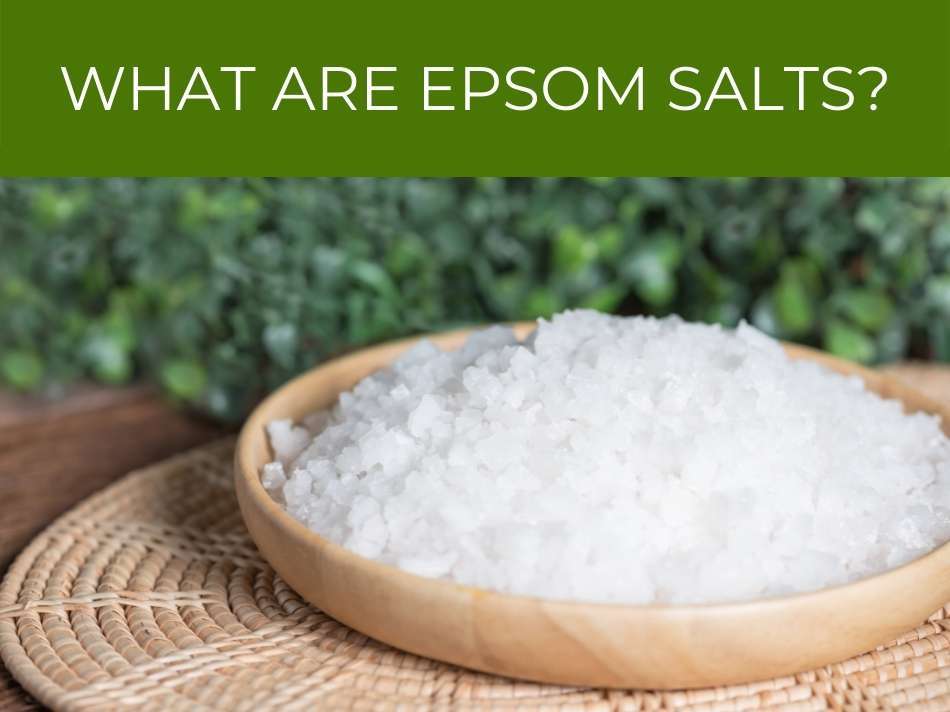
What are Epsom Salts?
Before you consider utilizing Epsom salts in your garden, it’s a good idea to learn a little history about them. Epsom salt is a colloquial name for the salts discovered several centuries ago in the well water of Epsom, England. These salts, unlike ordinary Sodium Chloride (table salt) are made of hydrated magnesium sulfate in ratios of 10% and 13%. That may seem like a mouthful of scientific jargon, but all it means is that it’s simply another kind of salt, albeit one you don’t want to eat!
You may already know about it – if you’ve ever sprained a muscle or overworked it at the gym, soaking in a bath of Epsom salts is a great way to relax and soothe those muscle fibers. But can that utility for muscles be applied to garden health?
Yes, it can. But, just as you wouldn’t mix Epsom salts into a smoothie, you can’t use them willy-nilly in your garden. Many sites and gardening aficionados claim that Epsom salts are a cure-all. However, that’s sadly not true. Epsom salts were historically applied to soils in the southeastern United States and the Pacific northwest, both of which have poor soils that respond well to Epsom salt. It follows that gardeners experiencing fantastic results with Epsom salt in their geographic area would assume the effect was universal.

Myths
The contentious history of Epsom salt is one which still has no definitive answer. Useful in some cases and harmful in others, magnesium sulfate is one mineral that has a myriad of properties, many of which affect plants.
Magnesium and sulfur are both minerals which are essential for plant growth. Magnesium activates enzymes in plant metabolism, helping it grow and bear fruit. It’s also instrumental in the creation of chlorophyll, the molecule in plant cells that causes plants to be green. That’s why a magnesium-lacking plant will often turn yellow.
As recently as a few decades ago, using Epsom salts in the garden was considered a reliable method of encouraging foliage growth and root development. Articles dating back to 1915 have examined the role of Epsom salts in pest control, soil quality, and growing ability. Sadly, those results are less than stellar. However, research wasn’t very accessible to the public, and few gardeners learned of the lackluster effects of Epsom salts.
The rise of the internet changed that by increasing the accessibility and quantity of online information about gardening. Misinformation became more widespread, and the growing numbers of novice gardeners had no way to determine what gardening advice was true and what was patently false.
In today’s internet saturated world, the old-fashioned ways are making a comeback, albeit with an earth-friendly twist. Sustainability is a new focus of bloggers and professional gardeners, who encourage beginners and hobbyists to utilize Epsom salts liberally in their garden. As a non-nitrogenous mineral with a markedly lower risk of runoff, pollution, and indirect negative effects, its popularity has soared.
But is Epsom salt really a cure all? How did these rumors of overnight garden recovery begin?

Research
Epsom salt’s claims of universal plant cures began when plants in heavily cropped, sandy and acidic agricultural fields grew dramatically after Epsom salt supplementation. After seeing such amazing recovery, farmers and gardeners preached its wonders everywhere. However, they failed to realize that the soil profile across the United States varies immensely.
Magnesium deficiency is caused by two things. The first is an internal imbalance of minerals within the plant, and the second is a lack of magnesium in the soil. Both of these deficiencies are more likely to occur in acidic, light, and sandy soils.
Now, magnesium is an especially valuable mineral for plants. Without it, vegetation stands the chance of wilting, being less productive over the growing season, or even dying. A magnesium deficiency is possible if the leaves on your plants have curled up and turned yellow.
Epsom salts are best used on magnesium hungry plants, and in fact, should only be used on soils deficient in magnesium. Historically, plants in expansive fields or intensively managed systems are those which developed magnesium deficiencies, but that doesn’t mean it can’t occur in a smaller garden.
It follows that the best dose of Epsom salt may be a smaller one as opposed to a larger one. Epsom salts’ negative effects can outweigh the positive effects when they pollute water systems. Systems more vulnerable to this risk are those with high rainfall or ones that are watered heavily. This includes the Pacific Northwest, which is privy to more rainfall than most of the continental United States.
Plants such as beets, carrots, cauliflower, kale, peppers, potatoes, snap beans, watermelon, tomatoes, and sweet potatoes have been known to respond well to magnesium supplementation. It’s important to note, however, that these were all intensively grown, magnesium-deficient crops.
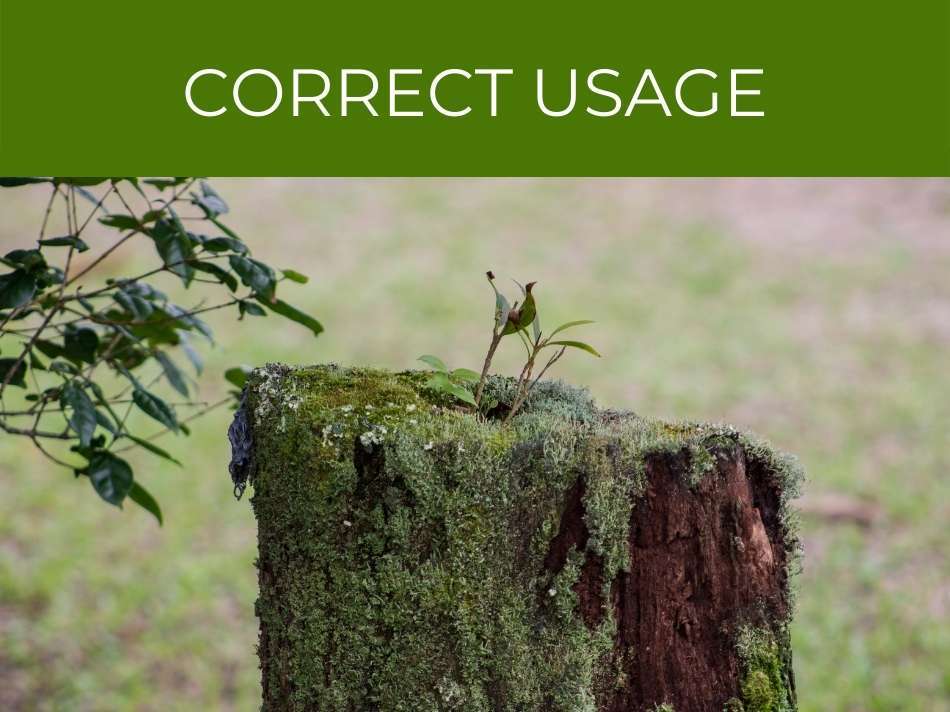
Correct Usage
If you have stumps in your garden or surrounding yard, you can also utilize Epsom salts to remove tree stumps. It takes longer than mechanical removal, but it’s gentler on the gardener, not to mention less expensive and requires no special equipment.
Drill holes in a circle around the stump top with a ½ inch drill bit so that they reach halfway into the stump. Fill each hole with Epsom salts, then pour water in until the salts are moistened. Grab a tarp and cover the stump. This desiccates the tree stump until it’s easy to chop away at and remove completely.
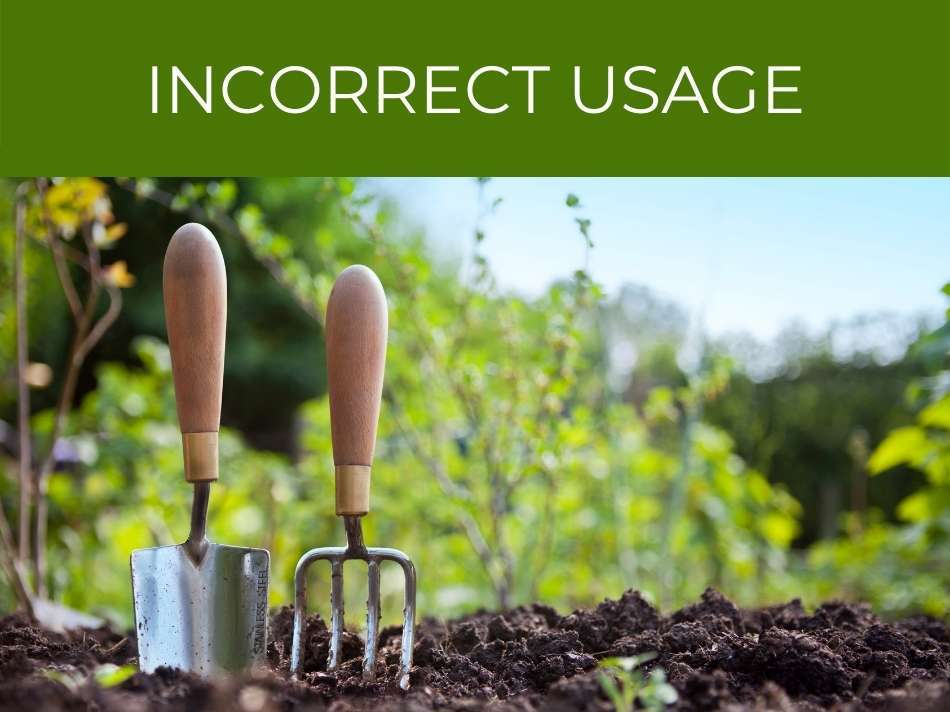
Incorrect Usage
Preventative application of magnesium sulfate is not recommended. Just as you wouldn’t pour extra oil into your car’s engine to ‘make sure it continues running well’, it’s not a good idea to toss some Epsom salt into the garden to prevent problems. In fact, you might end up creating a problem by letting the soil accumulate too much magnesium or sulfur.
Another myth about Epsom salt is that it fixes tomato blossom end rot. However, this could not be farther from the truth. Epsom salts can actually encourage blossom end rot. How? Nutrient uptake ratios. Blossom end rot is caused by a calcium deficiency. Because Epsom salts contain only magnesium and sulfur, they have no ability to increase the quantity of calcium in the plant.
Furthermore, calcium and magnesium actually compete with each other to be absorbed by the plant’s roots. So, if you put Epsom salts in your soil, the calcium that already exists there will have a more difficult time reaching your tomato.
Epsom salt has no efficacy against pests, as far as current tests suggest. Research shows that flies, grasshoppers, slugs, and rabbits are completely unaffected by Epsom salt. If you struggle with pests, try deterrents or pesticides specifically for that pest. That way you can solve your problems without disturbing other parts of the garden’s natural balance.
Don’t allow your application of fertilizers, garden aids, or plant-growing ‘secrets’ to take the place of regular gardening care. It may take a half hour each day to rid the garden of weeds, mulch, and check for pests, but those daily tasks are the fundamental building blocks of keeping a garden.
Your garden probably doesn’t need a large amount of Epsom salts or fertilizers. It just needs sunlight, water, and an attentive gardener to ensure its well-being.
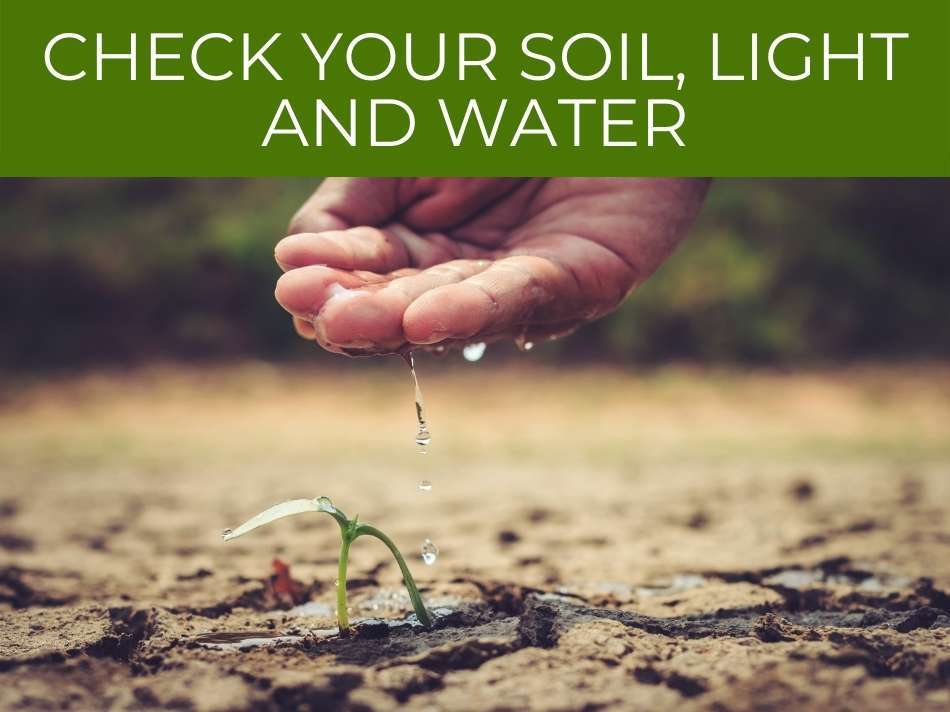
Check Your Soil, Light, and Water
Before jumping to Epsom salts to increase the health and growth of your garden, examine the big three gardening requirements. Sometimes, changes in weather, soil, or light availability can throw your plants for a loop. Give it a little time, and they’ll return to normal without any need for magnesium sulfate supplementation.

Light
Light is a major component of your garden. Have some trees grown and shaded the plants since the spring began? Have there been more cloudy days this summer than usual? You’d be shocked at the power of light to revive wilting or non-producing plants.

Water
Water: is there too much rain? Is there too little? It’s difficult to gauge your water needs if you’re new to gardening. But, make sure that you water your garden regularly, especially if you live in a n arid climate. If you are concerned about over watering and runoff, reduce the number of times you water per week and arrange the slope in your garden so that water does not pool around plants.
Soil
Soil quality is the foundation from which all of your plants grow. If there are mineral deficiencies, your plants have a higher chance of stunted growth patterns, low harvest yields, or even dying.
Only use magnesium salts if your soil has a recognizable magnesium deficiency. You can easily test the magnesium in your garden’s soil by using a soil mineral and nutrients test. Most are inexpensive and found at the local hardware store. Once you have your answer, it will be pretty clear cut as to whether or not magnesium sulfate is in the cards for your garden. Make sure to assess other nutrients in the garden too!
Have you thought about the mineral content of your city or well water? Depending on the region in which you live, magnesium and sulfur content of the water can vary.
Chart (Using Epsom Salt on Your Garden)
|
Should I Use Epsom Salt in My Garden? | |
| My garden is magnesium deficient. | Yes |
| There are pests in my garden. | No |
| My tomatoes have blossom-end rot. | No |
| There are major runoff problems in my sandy, weathered-soil garden. | Maybe. Invest in some low-solubility magnesium sulfate after conducting a mineral test. |
| My plants aren’t growing well. | Maybe. This is too broad of a question to pinpoint a need for Epsom salts. Assess light, water, and soil quality before proceeding. |
| My soil has a calcium deficiency. | No. Epsom salts when applied to the soil can reduce the amount of calcium going to the plant. |
To avoid runoff and waste of your Epsom salts, purchase less soluble crystals. They’ll take longer to dissolve and won’t wash away if there’s rain after application. This is especially helpful if you live in an area with high rainfall or an area with acidic, highly weathered soils. Two areas of the United States with these conditions are the Southeast and the Pacific Northwest. Soils in the western United States tend to be highly alkaline, and may benefit from Epsom salt application as well.
Severely magnesium deficient soils with a pH above 7 should be treated with Sul-Po-Mag, a multi-component fertilizer. Sul-Po-Mag is better for an area with calcium uptake issues than dolomitic lime, since the latter’s calcium content has a high chance of interfering with magnesium uptake in the plant’s root system.
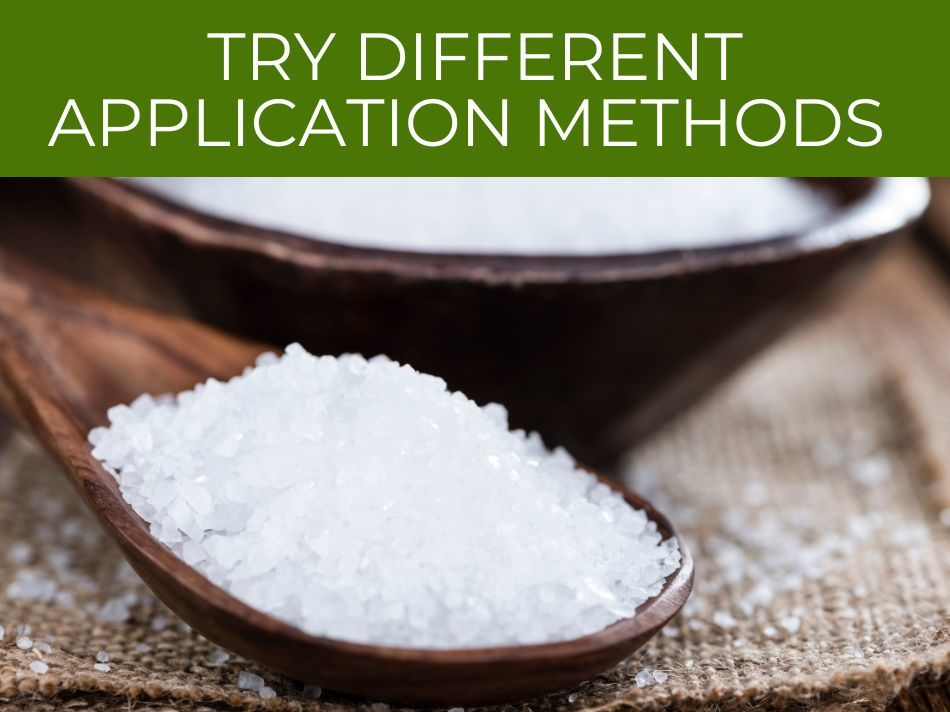
Try Different Application Methods
Consider different types of Epsom salt application. These include spraying solutions, sprinkling crystals, or pouring dissolved crystals directly onto plants.
Epsom salts can be applied to plants in a variety of ways. You can mix it with other fertilizers to increase your efficiency or apply it separately to determine just how much you need and exactly what the effects are. Current science doesn’t have a specific answer on how much Epsom salts are too much, so it may be best to go with the latter.
Application alone has three different methods. The least intensive way to apply Epsom salts is to sprinkle crystals directly onto soil. Or, increase your absorption of the mineral by creating a solution with a sprayer. Spray the Epsom salt solution onto the plants’ foliage.
Research suggests that leaf application of a soluble mixture may lead to a better absorption rate, although results are mixed. Current methodology encourages leaf application because the magnesium is more easily absorbed through the leaves than it’s through the roots. This is because magnesium competes with other minerals like calcium for entry into the root system. By spraying the leaves and not the ground, the gardener reduces the chance of mineral absorption interference in the root system.
If you can’t apply to the leaves of your plants, that is no reason to worry. If you have a magnesium deficient garden, any way of applying Epsom salts is better than not at all!
Related Questions
Can I apply too much Epsom salts to my garden?
Yes. Epsom salts are not a cure all. Using too much can throw the nutrient balance in your garden out of whack and can cause potassium deficiency. Make sure to test your soil prior to applying Epsom salts. Just like any other nutrient or fertilizer, a little usually goes a long way.
How often should I put Epsom salt on my garden?
Put Epsom salt on your garden as needed to reduce a magnesium deficiency. Don’t freely apply Epsom salt to an unassessed garden, as it can have negative effects on potassium and calcium levels.
What plants can you put Epsom salt on?
Plants that use a lot of magnesium, such as tomatoes, roses, and peppers, are especially receptive to magnesium supplementation. However, if a garden is in a magnesium deficient zone, all plants in the area will benefit from Epsom salt application.
Balancing your desire for sustainability – a worthy goal and a valuable investment – with your need for healthy, productive plants is attainable with consistent garden maintenance and TLC for your plants. Don’t worry about making everything completely perfect.
This article is not meant to be a litany of reasons not to apply Epsom salts. In fact, it’s the opposite. It’s a great idea to use Epsom salts on your garden, as long as your garden actually needs them. Not only do Epsom salts, when used correctly, have the potential to make an at-risk garden safe from mineral deficiencies, but they also replenish magnesium in the soil, a crucial need for all plant life. Even if you’ve already applied Epsom salts to your garden, rest assured that with time and proper care, your soil will soon return to equilibrium.

